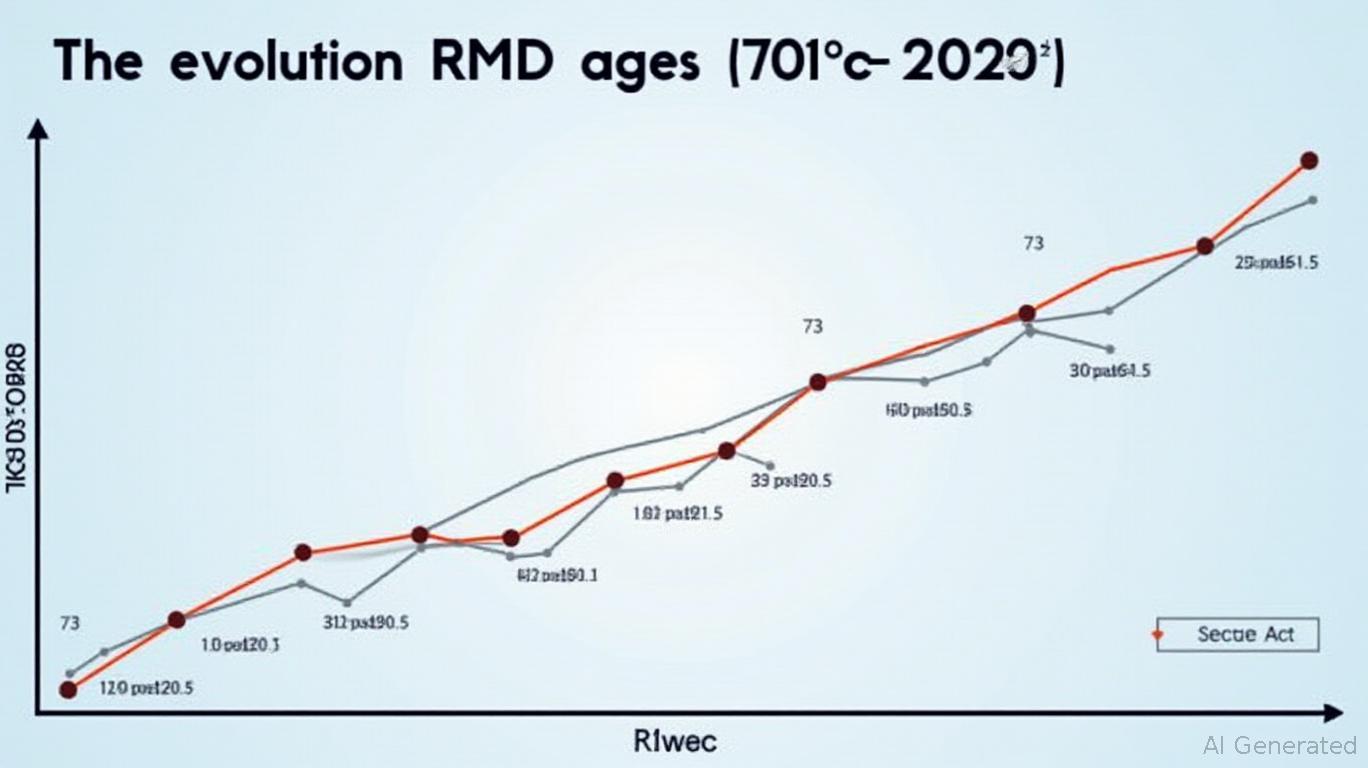Maximizing Retirement Wealth: Strategies for High-Income Earners to Optimize RMDs and Extend Tax Efficiency
High-income retirees face a unique challenge: maintaining tax efficiency while maximizing portfolio longevity. Recent
rule changes, including the delayed RMD start age and expanded charitable giving options, offer new tools to navigate this landscape. This article explores how strategic use of Roth conversions, qualified charitable distributions (QCDs), and deferred-income annuities can reduce tax burdens and extend wealth over generations.
The RMD Landscape: A New Era of Flexibility
The SECURE 2.0 Act of 2023 raised the RMD start age to 73 for individuals turning . This delay, coupled with reduced penalties for missed RMDs (now 25% down from 50%), provides high-income earners more time to grow tax-deferred assets. However, the 10-year distribution rule for inherited IRAs remains unchanged, incentivizing strategies to minimize taxable estates.
Key Changes to Note:
- RMD Start Age: 73 (effective for those turning 72 after December 31, 2022).
- Penalty Relief: Reduced excise tax for missed RMDs, with potential waivers for reasonable errors.
- Roth Conversions: No income limits; all earners can convert traditional IRAs to Roth IRAs.
Strategy 1: Roth Conversions for Tax-Free Growth
Roth conversions allow high-income earners to lock in current tax rates while avoiding future RMDs. Since Roth IRAs are not subject to RMDs, converting large pre-tax balances can extend tax-free compounding.
Why It Works:
- Tax Rate Arbitrage: Convert during low-income years (e.g., between retirement and age 73) to pay taxes at a lower bracket.
- Estate Planning: Roth IRAs pass to heirs without triggering the 10-year rule, allowing decades of tax-free growth.
Example:
A retiree in the 32% tax bracket converts a $500,000 IRA to a Roth IRA, paying $160,000 in taxes. If the account grows to $2M over 20 years, heirs withdraw tax-free—a $1.5M savings compared to traditional IRA distributions.
Critical Considerations:
- The 5-Year Rule: Ensure conversions are held for at least five years to avoid early withdrawal penalties.
- Aggregation Rules: Separate conversions across multiple IRAs to avoid overpayment of taxes.
Strategy 2: Qualified Charitable Distributions (QCDs)
QCDs allow retirees to donate up to $108,000 annually (or $216,000 for married couples) directly from IRAs to charities. This strategy reduces taxable income while fulfilling RMDs.
How to Optimize:
- Offset RMDs Early: Make QCDs before taking RMDs to avoid taxable income.
- Split-Interest Gifts: Use QCDs to fund charitable remainder trusts (CRTs), enabling lifetime income while supporting charities.
Example:
A couple with a $200,000 RMD could donate $200,000 via QCDs, eliminating taxable income and satisfying their RMD.
Strategy 3: Deferred-Income Annuities for Long-Term Stability
Deferred-income annuities (DIAs) provide guaranteed income later in life, aligning with delayed RMDs. By concentrating risk in later years, high-income retirees can preserve liquidity and reduce RMD burdens.
Benefits:
- Tax-Deferred Growth: Premiums grow tax-free until payout.
- Income Certainty: Guaranteed payouts at a future date (e.g., age 85), reducing reliance on volatile portfolios.
Expert Recommendation:
Pair DIAs with Roth conversions to create a “tax-free floor” of income, shielding other assets from RMDs.
Expert Insights for 2025 and Beyond
- Timing Matters: Convert IRAs to Roths before age 73 to avoid RMDs. Use QCDs to offset RMDs once they begin.
- Avoid Common Pitfalls:
- Exceeding QCD limits ($108k/year) triggers taxes on excess amounts.
- Missing RMD deadlines—always file Form 5329 to report errors.
- Professional Guidance: Work with tax advisors to model scenarios, ensuring compliance with IRS rules (e.g., the 10-year rule for beneficiaries).
Conclusion: Building a Tax-Efficient Legacy
High-income retirees can thrive under new IRS rules by strategically deferring RMDs and leveraging tax-advantaged tools. Roth conversions, QCDs, and DIAs create a robust framework for minimizing taxes and extending wealth. As one advisor notes, “The goal isn't just to pay less tax today—it's to build a portfolio that works smarter for you and your heirs.”
In this era of delayed RMDs, proactive planning is the cornerstone of long-term financial success.


Comments
No comments yet